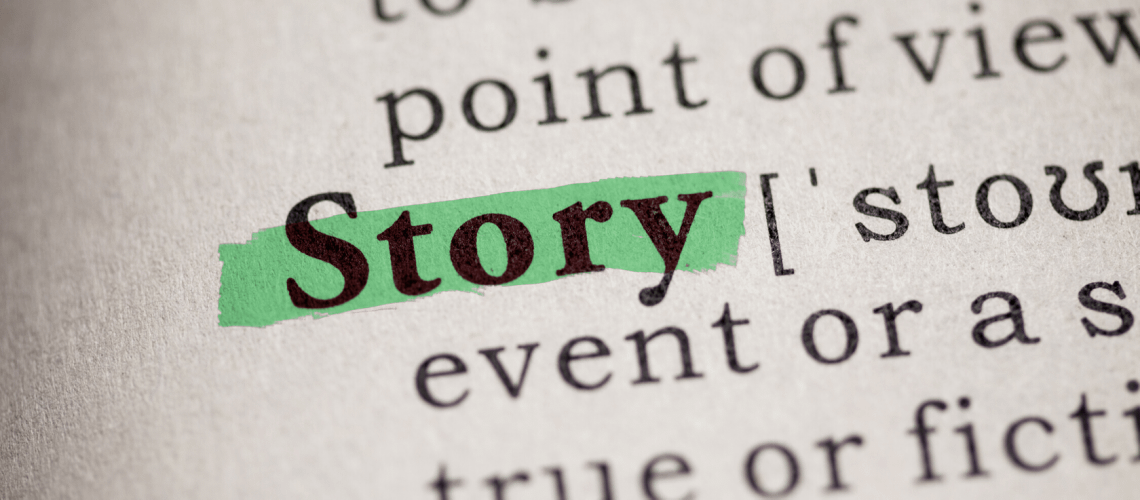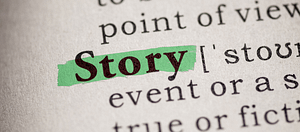There’s an old saying in advertising circles: Facts tell, but stories sell.
It’s true. You may have the facts on your side, but it’s not always enough to move people to action. If the facts could do it alone, there wouldn’t be climate deniers, flat earthers, or such partisan divides in our world.
To be effective, you need to distinguish between the message and the story. The story leads people on a journey to discover the message in stages that build upon each other. The goal (message) is found in the journey (story) during the presentation.
It’s why statistics about the number of people that are starving fail to inspire action, but pictures of malnourished children move us. Facts and messaging appeal to our intellect, but the key to selling is to tap into our emotions.
Crafting a Message for Your Video
Emotions can have a profound effect on our thinking. Rather than cognitive impressions, they can create instinctual impressions that are lasting. Emotion can predispose us to act.
Advertisers have known about these emotional triggers for decades. They create ways to manipulate feelings and stimulate triggers to influence how we make decisions. Whether they utilize joy, sadness, anger, or fear, they tell a story to highlight a message and move people to act.
Key Considerations
Here are a few of the key considerations when crafting a message for your video.
1. Keep It Simple
For your message to resonate, you need to keep things simple. Fight the temptation to load up your content with everything you’ve got. You need a lot of diverse content but each one should have a simple underlying message. The story may change, but the messaging will stay the same.
2. Make It Clear
Don’t rely on nuances and logical assumptions. Think through the eyes of your target audience and be abundantly clear about what you’re trying to say.
3. Provide a Tangible Call to Action
Likewise, you need to make it clear what you want your audience to do. There is nothing worse than getting an audience excited about your cause and then leaving them hanging with questions about how to move forward. Don’t make the mistake of assuming people will know what you want. Tell them.
Use Behavioral Change Tactics
Social norms are powerful motivators. It is why companies use athletes, movie stars, and social media influencers to sell products. People are more likely to model behavior when they feel it is socially acceptable or see other people doing it. For example, studies show that once one person installs solar panels on their roof, the likelihood that others in the neighborhood will do so increases rapidly. One major solar company reports that a third of its customers are referrals.
This momentum effect can be a harbinger of social change. As people see things growing in popularity, the effect can be multiplied. A study by Stanford researchers showed that dynamic messages indicated change can alter behavior. In one study, students were given two different messages in laundry facilities:
- Static Message: Most Stanford residents use full loads to help conserve water
- Dynamic Message: Stanford residents are changing: Now most use full loads to help conserve water
There was nearly a 30% reduction in water usage from those who saw the dynamic message compared to just 10% for the static message and no change for those that saw no messaging.
Dynamic messaging lets people know it’s all right to take action and that others are doing it as well.
In the example below, we harness many of the techniques listed above to deliver clear and compelling messaging.
Crafting a Story Based on Your Message
It’s easier to absorb and remember facts when they are told in the form of a story. It’s how every child learns about gravity by hearing the story of Isaac Newton and the apple.
There are a lot of competing things going on in our brains at any one time. Your story must begin by attracting attention. To activate your brain, it helps to have tension or conflict. This creates empathy and allows people to share the emotions of characters. As your story climaxes, resolution can lead to an audience’s adoption of the feelings or behaviors presented.
As Paul J. Zak, founding director of the Center for Neuroeconomics Studies at Claremont Graduate University put it: “Capture people’s hearts by first attracting their brains.”
Key Considerations
1. Use Effective Storytelling Techniques
- A beginning, middle, and end
- Relatable characters
- A conflict or challenge to overcome
- Empathy
- Resolution
2. Communicate Visually
In every instance, visuals will speak louder than words.
90% of information transmitted to the brain is visual. While words and text have to be absorbed and understood, MIT neurologists have shown the brain can identify imagery in as little as 13 milliseconds. These visuals can evoke an emotional and visceral response that resonates.
People don’t want to watch PowerPoints with bullet points. They want to be shown how the underlying facts affect the real world.
Strong visuals that demonstrate the effect of the message help with what neuropsychologists call encoding. Encoding is the biological process in which the brain perceives information. As information travels to the hippocampus, it is analyzed by the brain where a decision is made about where to store it. Visuals improve the encoding process as information is stored. Adding sounds, such as music or narration, stimulates the other senses and can magnify the encoding process.
We Can Help
Wild Agency combines award-winning video production with data and strategy to supercharge your conservation campaigns.
We know it can be hard to break through the noise online. Audiences want to hear from you. They’re looking for compelling media and conservation solutions that will help save the planet, but it is hard to break through all the clutter and incorrect information that’s online.
Whether you are a foundation looking to take on a bold new storytelling campaign, or a non-profit needing assistance with a current project, our services will help your reach audiences and achieve impact with storytelling. Contact us today and let us show you how we can help craft your message in a way that motivates people to action.

